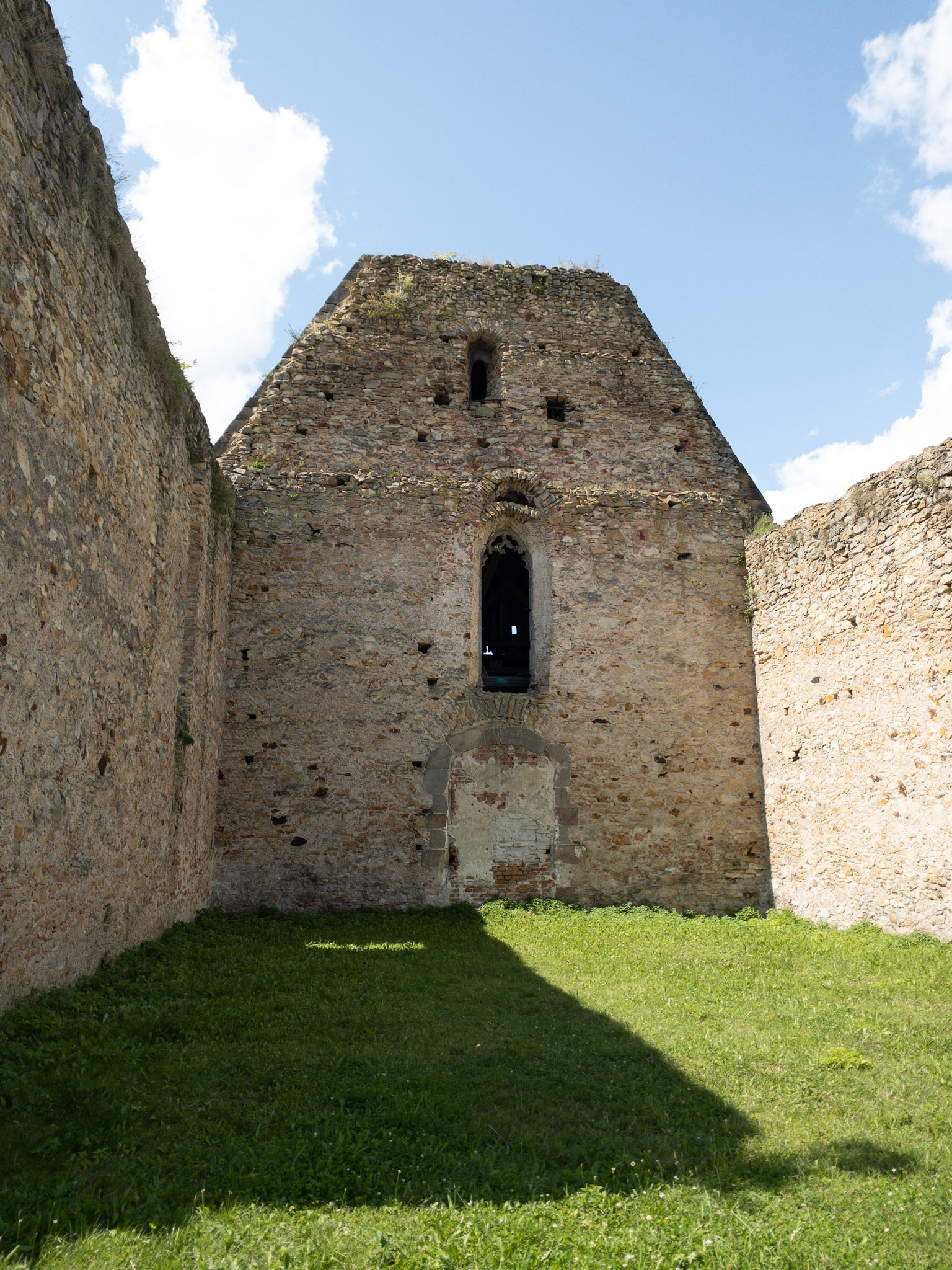Pictures from Třebařov-Triebensdorf

Cemetery in Třebařov

Before the village from the south

Entering from the south

Church

Cross in Church's garden

Ruins of an Augustinian monastery

Ruins 2

Ruins 3
The Augustinian monastery was founded in the 13th century and soon became the cultural and spiritual centre of the region. However, it was plundered during the Hussite wars and has been abandoned since 1550. Today, you can see the relics of the monastery church walls with Gothic windows with cruciform lining and the adjacent wooden bell tower.
The Augustinian monastery called Corona sanctae Mariae, i.e. the Crown of the Virgin Mary, was built in Třebařov in the middle of the 13th century by the owner of the Moravian-Třebov estate, Boreš of Rýzmburk. According to legend, it was because he fell from his horse on the site of the future monastery, injured himself and promised God to build a monastery as thanks for his rescue.
The monastery was named Crown of the Virgin Mary and was inhabited by about 10 monks. The nobleman then gave them 20 fields in Třebařov, a mountain and forests near Krasíkov, a mill on the Sázava River, half of the village of Tatenice and later other fields near Třebařov.
In later times, the monastery became a famous pilgrimage site, where pilgrims came from far and wide, reportedly even from Poland. Tatenice was then called the village of penitents. Here, pilgrims had to strip off their sinful garments and dress in simple linen robes, in which they could then present their petitions to the Virgin Mary's altar. The monastery in Třebařov had its own courtyard at the northern end of the village, which in the 16th century belonged to the Třebařov nobility. The monastery disappeared for a while, then was restored during the Hussite times, but in 1552 it disappeared completely. Today the former monastery is freely accessible.
Translated with www.DeepL.com/Translator (free version)